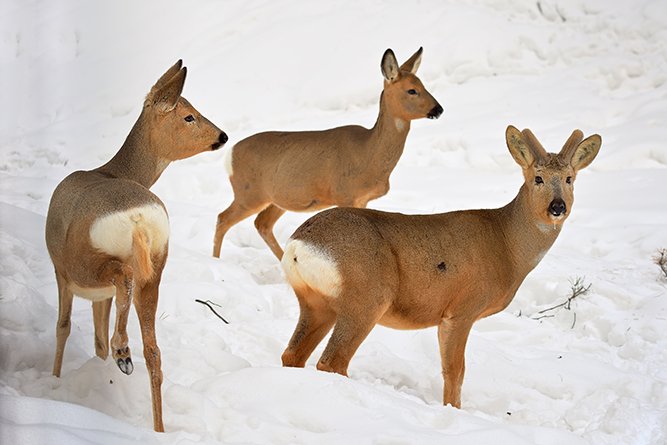Imagine a creature that silently roams the northern forests of Siberia, a true emblem of wilderness. The Siberian Roe Deer, a captivating species, is known for its elusive nature and unique characteristics. From its petite stature to its remarkable adaptability, this deer has much to unveil.
Species Data
- Class: Mammalia
- Order: Artiodactyla
- Family: Cervidae
- Scientific Name: Capreolus pygargus
- Life Span: Approximately 10-15 years
- Height: Around 60-70 cm (24-28 inches)
- Weight: Approximately 30-45 kg (66-99 pounds)
Description
The Siberian Roe Deer, scientifically known as Capreolus pygargus, is a small to medium-sized deer species native to the vast forests of Siberia. It is characterized by its reddish-brown coat, white rump patch, and distinctive short antlers in males. These deer are well adapted to cold climates, with a dense fur coat that provides insulation during harsh winters.
Appearance
Siberian Roe Deer exhibit sexual dimorphism, with males (bucks) typically larger than females (does). Bucks grow short, straight antlers with three points, while does lack antlers altogether. Their reddish-brown fur camouflages well with the forest environment, offering them protection from predators.
Behavior
Known for their solitary and elusive behavior, Siberian Roe Deer are primarily crepuscular, meaning they are most active during dawn and dusk. They are herbivores and feed on a diet consisting of various plants, including grasses, leaves, and shrubs.
Habitat
These deer inhabit the extensive taiga and forested regions of Siberia, making use of the dense vegetation for cover and sustenance. Their ability to adapt to varying forest types and climates has contributed to their wide distribution.
Diet and Nutrition
Siberian Roe Deer are herbivorous, with a diet that primarily includes grasses, leaves, buds, and shoots. Their feeding habits change with the seasons, adapting to the availability of different plant resources.
Mating Habits
During the mating season, which typically occurs in late July to early August, bucks engage in vocalizations and physical displays to attract does.
Mating Behavior
- Reproduction Season: Late July to early August
- Pregnancy Duration: Around 10 months
- Baby Carrying: Does care for and nurse their fawns
- Independent Age: Fawns become independent at around 6-8 months
- Female Name: Doe
- Male Name: Buck
- Baby Name: Fawn
5 Fun Facts for Kids
- Siberian Roe Deer are skilled jumpers, capable of leaping over obstacles with grace.
- They communicate using a series of vocalizations, including barks and whistles.
- These deer have a keen sense of smell, which they use to detect predators.
- Siberian Roe Deer play an essential role in forest ecosystems by influencing plant growth through their feeding habits.
- They are known for their incredible adaptability to the harsh Siberian winters, where temperatures can plummet far below freezing.

